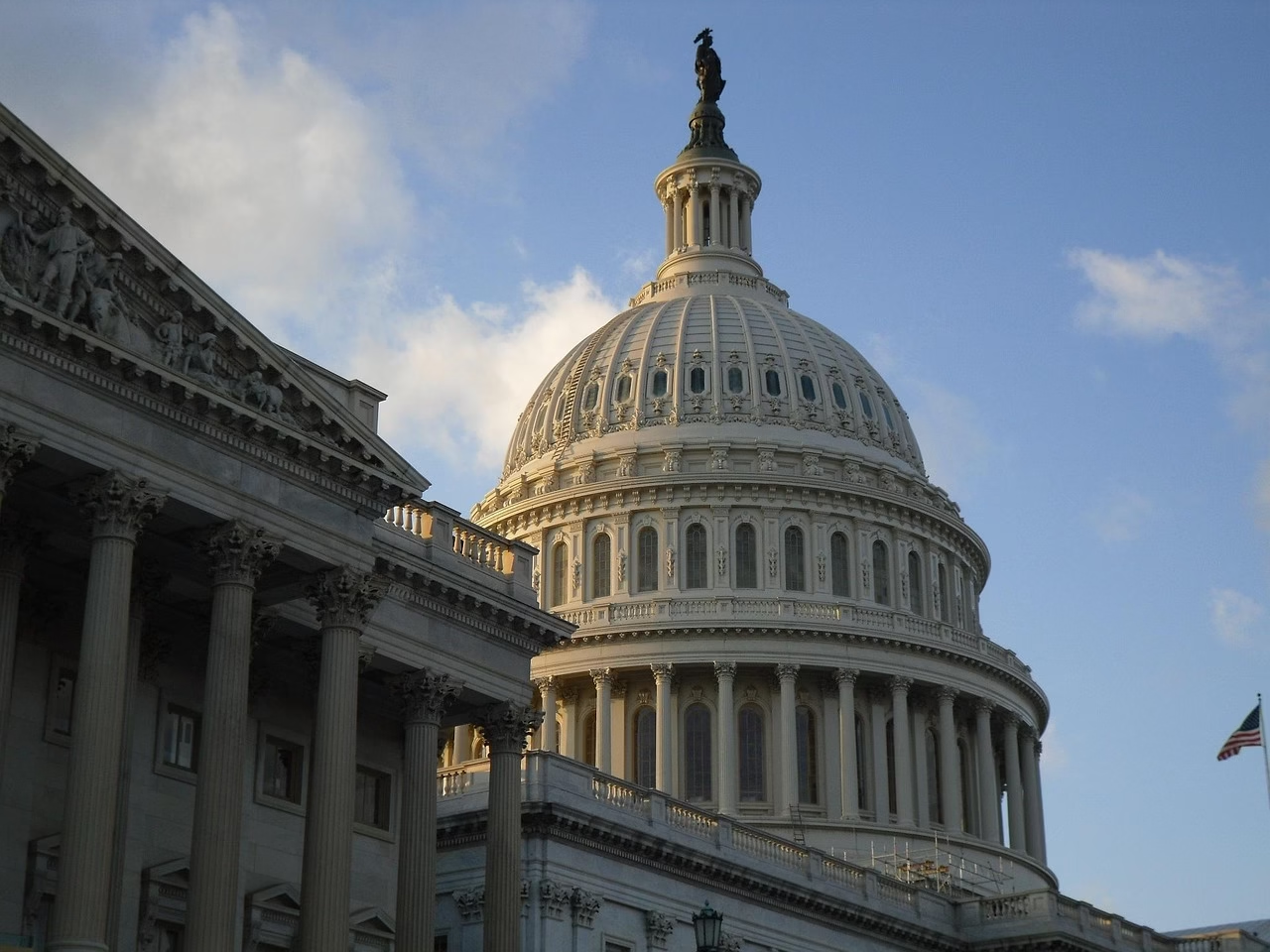Update 7/15/2025: The IRS has issued a Fact Sheet that provides the initial guidance around the new provisions of HR1 / One Big Beautiful Bill Act. You’ll see some additional notes throughout the article explaining these.
Breaking News: After weeks of negotiation, Congress has passed H.R.1 (the “One Big Beautiful Bill”), which the President is expected to sign before July 4th. This sweeping legislation brings the most significant tax changes since 2017, affecting virtually every taxpayer and business owner in America.
Important note: This analysis focuses specifically on the tax provisions of H.R.1. The bill contains many non-tax provisions that are beyond the scope of this review. While the bill has passed both chambers of Congress and is expected to be signed into law, the IRS still needs to interpret the legislation and create the regulations and tax forms we’ll actually use to file our 2025 returns.
Timing and accuracy disclaimer: This analysis was prepared quickly following the bill’s passage to provide timely guidance on major provisions. Given the complexity of this 887-page legislation and the speed of recent developments, some details may require clarification as we study the final text more thoroughly. We are committed to updating this analysis as we learn more and as IRS implementation guidance becomes available.
At JCT Tax Solutions, we’ve been analyzing this 887-page bill to identify what matters most for our clients. Here are the greatest hits – the changes that will have the biggest impact on the most people.
The Foundation: 2017 Tax Cuts Now Permanent
The most significant aspect of this legislation is making the Tax Cuts and Jobs Act (TCJA) provisions permanent. These were originally set to expire December 31, 2025, which would have meant major tax increases starting in 2026. Now that uncertainty is gone:
- Individual tax rates and brackets – locked in permanently (no change for 2025, but secured for 2026 and beyond)
- Higher standard deductions – no more sunset clause, permanently replacing personal exemptions
- Child Tax Credit – secured at enhanced levels
- Alternative Minimum Tax relief – permanent higher exemptions
What this means: Your 2025 taxes don’t change from what you were already expecting, but 2026 and beyond are now secure. No more worrying about a massive tax increase next year, and you can plan confidently for the future.
Personal exemptions: These remain suspended permanently. The higher standard deductions that replaced them in 2017 are now the permanent structure, not a temporary placeholder.
The Big Winners: New Tax Breaks That Take Effect Immediately
1. No Tax on Tips (2025-2028)
If you work in a job that traditionally receives tips, you could see significant tax savings:
- Up to $25,000 in tips can be tax-free for federal income tax purposes only
- Income limits: Phases out for individuals earning over $150,000
- Works with any filing method: Available whether you itemize or take the standard deduction
- Starts immediately: Effective for 2025 tax year
Important limitation: This only applies to jobs where tipping is genuinely customary. The law specifically mentions:
- Food and beverage service (restaurants, bars, delivery)
- Barbering and hair care
- Nail care services
- Esthetics (skincare services)
- Body and spa treatments
By October 2, 2025, the IRS must publish a list of occupations that customarily and regularly received tips on or before December 31, 2024 – this is when we will have the real list of eligible jobs. (Updated 7/15/2025)
Critical details:
- You’ll still pay Social Security and Medicare taxes (7.65%) on all tip income
- State tax impact unclear: While many states start with federal AGI, they can require “add-backs” for items they don’t want to exclude. It’s too early to know how states will handle these new federal deductions.
The IRS will determine the full scope when they issue implementation guidance, but the key test is whether tipping is customary in your industry. If you work in an office job where customers don’t normally tip, this won’t help you. You also can’t restructure regular business income as “tips” – a consultant can’t change their $5,000 fee to “$1 + $4,999 suggested tip” to avoid taxes.
Update 7/15/2025: One limitation that the IRS released in their fact sheet that I did not catch in my initial read was that self-employed individuals in a Specified Service Trade or Business (SSTB) under section 199A are NOT eligible for the tips deduction. This would be the same exception list as is used for the Qualified Business Income (QBI) deduction: law, accounting, consulting, financial services, health, architecture, engineering, performing arts, athletics, and investment management.
2. No Tax on Overtime (2025-2028)
Overtime work just became much more profitable for federal income tax purposes:
- Up to $12,500 deduction for individuals ($25,000 for married couples) on federal income tax only
- Income limits: Phases out starting at $150,000 (individual) / $300,000 (married)
- Qualified overtime only: Must be the premium pay portion (like the “half” in “time-and-a-half”) that exceed sthe regular rate of pay as required by the Fair Labor Standards Act (FLSA) (updated 7/15/2025)
Critical details:
- You’ll still pay Social Security and Medicare taxes (7.65%) on all overtime income
- State tax impact unclear: It’s too early to know whether states will conform to these new federal deductions or require add-backs
3. Social Security Relief for Seniors (2025-2028)
The promised “no tax on Social Security” becomes reality for most seniors:
- Additional $6,000 standard deduction for those 65 and older (Senate version; House version was $4,000)
- Income limits: Phases out starting at $75,000 (individuals) / $150,000 (couples), eliminated entirely at $175,000 / $250,000
- If married, taxpayers must file jointly to claim the senior deduction.
- White House analysis: 88% of seniors will pay no tax on Social Security benefits (up from 64% currently)
- Reality check: Over 7 million higher-income seniors will still pay taxes on Social Security
How it works: The additional deduction, combined with standard deductions and other breaks, means most seniors with average Social Security income (~$24,000/year) will owe no federal tax on benefits.
4. No Tax on Auto Loan Interest (2025-2028)
A new deduction for car buyers:
- Up to $10,000 deduction for interest paid on auto loans
- Qualifying vehicles: New cars assembled in the United States
- Used vehicles do not apply – it must be a new vehicle and one where the original use of it begins with the taxpayer. (Updated 7/15/2025)
- The taxpayer must include the VIN of the qualified vehicle on the tax return. (Updated 7/15/2025)
- Income limits: Phases out when AGI exceeds $100,000 (individuals) / $200,000 (married couples)
- State tax impact unclear: Same uncertainty about state conformity as tips and overtime
5. Enhanced Standard Deductions for Everyone
- Slight increase in 2025 standard deduction amounts – about $750 more for individuals, $1,500 for married couples
- Made permanent: The TCJA’s higher standard deductions (which replaced personal exemptions) are now locked in forever
- No more uncertainty: You can plan confidently knowing these amounts won’t revert to pre-2017 levels
Small Business and Self-Employed: Major Wins
Enhanced QBI Deduction (Section 199A) – The Big One
This is huge for small business owners:
- Increased from 20% to 23% starting in 2026
- Made permanent – no more 2025 expiration
- New effective tax rate: 28.49% for top-bracket earners (down from 29.6%)
- Who benefits: Sole proprietors, partnerships, S-Corps, and LLC owners
Real-world impact: If you’re a business owner in the 37% tax bracket, your effective rate on business income drops permanently. This could save thousands annually.
Keep in mind, the standard SSTB (Specified Service Trade or Business) restrictions apply.
Business Expensing Enhanced
Equipment and investment purchases just became much more attractive:
- 100% bonus depreciation restored for property placed in service 2025-2029 (was scheduled to be only 40% in 2025, then 20% in 2026, then zero)
- R&D expenses can be immediately deducted (instead of 5-year amortization) through 2029
- Section 179 expensing doubled to $2.5 million (from $1.25 million)
- Business interest deduction restored to more favorable EBITDA standard (2025-2028)
How this saves you money: Instead of deducting equipment costs over several years, you can deduct the full amount immediately. For example, a $100,000 piece of equipment would have provided only a $40,000 deduction in 2025 under the old rules, but now provides the full $100,000 deduction. For a business in the 37% tax bracket, that’s an additional $22,200 in immediate tax savings.
Important note: While immediate expensing usually provides the best tax benefit, there may be situations where spreading the deduction over time makes more sense for your specific tax situation.
Planning opportunity: If you’ve been delaying major equipment purchases, 2025-2029 could offer significant immediate tax benefits compared to what was originally scheduled.
State and Local Tax (SALT) Relief
The change: SALT deduction cap raised to $40,000 (from $10,000) retroactively for 2025 Income limits: Phases down for individuals earning over $500,000
Duration: Through 2029, then reverts to $10,000 Local impact: This primarily benefits taxpayers in higher property tax areas (like parts of the Twin Cities metro) where property taxes plus state income taxes exceeded the old $10,000 cap
Important consideration: The higher standard deductions mean fewer people will itemize overall, but for those who do itemize, this SALT cap increase provides meaningful relief.
Planning note: Pass-through entities in certain service businesses may lose some SALT workarounds, but the higher cap more than compensates for most affected taxpayers.
Family Tax Benefits Enhanced
Child Tax Credit and Trump Accounts
- Child Tax Credit increased to $2,200 per child (up from $2,000)
- Made permanent – no more uncertainty
- Trump Accounts: New $1,000 government investment for newborns
Trump Accounts: A Closer Look
This new pilot program creates investment accounts for children born between January 1, 2025 and December 31, 2028:
The Basics:
- $1,000 initial deposit from the federal government into a stock market index fund
- Additional contributions allowed: Up to $5,000 per year from families, employers, or others
- Tax-deferred growth: Similar to a traditional IRA
- Managed by guardians until the child reaches 18
Withdrawal Rules:
- No access until age 18 (except for rollovers to other accounts)
- Ages 18-24: Can withdraw up to 50% for education, training, small business loans, or first-time home purchases
- Ages 25-29: Can withdraw up to 100% but only for those same qualified purposes
- Age 30+: Full access for any purpose
- Tax treatment: Qualified withdrawals taxed at long-term capital gains rates (generally lower than ordinary income)
Growth Potential: The Milken Institute estimates that $1,000 invested in a broad equity index fund would grow to approximately $8,300 over 20 years, even without additional contributions.
Eligibility Requirements:
- Child must be a U.S. citizen
- Both parents must have valid, work-eligible Social Security numbers
- Government will automatically create accounts if parents don’t open one
New Education Benefits
- School choice tax credits: Up to $5,000 or 10% of income for scholarship donations
- Enhanced adoption credit: Up to $5,000 now refundable
- Expanded 529 plans: New qualified expenses for K-12 and credentialing
What This Means Right Now
For Your 2025 Taxes:
- SALT cap increase applies retroactively to 2025 – you can deduct up to $40,000 this year
- New exemptions for tips, overtime, and senior Social Security benefits start immediately
- Enhanced standard deductions reduce taxable income for everyone
- Business expensing opportunities for equipment and R&D investments
For Your Long-term Planning:
- Rate certainty allows confident retirement and investment planning
- Permanent QBI enhancement makes pass-through business structures more attractive
- Known phase-out dates (2028-2029) create planning deadlines for temporary provisions
Important Limitations to Consider
While H.R.1 provides significant tax relief, there are some limitations and trade-offs to be aware of:
Eliminated Clean Energy Tax Credits
The bill terminates or significantly accelerates the end of many clean energy tax credits:
Ending December 31, 2025:
- Electric vehicle credits (up to $7,500 for new, $4,000 for used)
- Residential solar and energy efficiency credits (25C and 25D credits)
- Alternative fuel vehicle refueling property credit (EV charging stations)
- Commercial clean vehicle credits
- New energy-efficient home credit
- Clean hydrogen production credit
Important timing note: Some credits have different termination dates – the EV credits may end as early as 90-180 days after enactment (potentially late 2025), making immediate action critical for those planning purchases.
Temporary vs. Permanent Provisions
Permanent (No Expiration):
- TCJA individual rates and brackets
- Enhanced QBI deduction (23%)
- Child Tax Credit increase
- Standard deduction increases
Temporary (Expires 2028):
- Tips and overtime exemptions
- Senior Social Security deduction
- R&D immediate expensing
- Enhanced business interest deduction
- Auto loan interest deduction
Medium-term (Expires 2029):
- 100% bonus depreciation
- SALT cap increase to $40,000
Income Phase-outs and Limitations
Most new benefits have income limits, so higher earners may see reduced or eliminated benefits. The combination of various phase-outs can create complex planning situations.
Distribution Effects
According to CBO analysis, the tax changes generally provide larger benefits to middle and higher-income households, while lower-income households may see less benefit from many provisions.
Planning Considerations
Implementation Timeline
- 2025 tax year: No change to TCJA provisions (they weren’t expiring until December 31, 2025), but new benefits begin (tips, overtime, senior deductions, SALT cap increase)
- 2026 tax year: TCJA provisions that would have expired are now permanent, QBI deduction increases to 23%
- 2028: Several temporary provisions expire (tips, overtime, senior deductions)
- 2029: SALT cap reverts to $10,000, bonus depreciation phases out
What We’re Doing for Our Clients
At JCT Tax Solutions, we’re actively:
- Studying the legislation to understand all the implications and opportunities
- Monitoring IRS guidance as implementation details emerge over the coming months
- Developing planning strategies to help clients maximize benefits under the new rules
- Preparing for client consultations to review how these changes affect individual situations
We’re committed to staying ahead of the curve so we can provide informed guidance as you navigate these significant changes.
Next Steps for You
Immediate Actions (Before Year-End):
- Review estimated payments if you’re self-employed or have investment income
- Consider equipment purchases if you’re a business owner (100% deduction available)
- Evaluate SALT planning – you can now deduct up to $40,000 for 2025
- Act quickly on clean energy credits: If you’ve been planning an EV purchase, solar installation, or energy efficiency improvements, these credits end December 31, 2025 (some potentially sooner). Don’t delay if these were part of your plans.
2025 Planning:
- Withholding considerations: The IRS likely won’t update paycheck withholding tables before year-end, so any differences will be resolved when you file your 2025 return. If you increased your withholdings for 2025, you may want to recalculate based on these new rules.
- Track qualifying income for tips and overtime exemptions if applicable
- Plan business investments to maximize immediate expensing benefits
- Document new deduction opportunities as you encounter them throughout the year
Questions About Your Situation?
These changes create significant opportunities, but optimal strategies depend on your specific circumstances. The interaction of permanent and temporary provisions, income phase-outs, and business structures requires careful analysis.
Ready to optimize your tax strategy for these new rules? Contact JCT Tax Solutions today. We’ll help you understand exactly how H.R.1 affects your taxes and develop a plan to maximize your benefits under the new law.
Coming Next: Watch for our detailed follow-up posts diving deeper into:
- Complete guide for small business owners
- Family tax planning with new credits and deductions
- Advanced planning strategies for high-income taxpayers
This analysis was prepared quickly following the passage of H.R.1 to provide timely guidance on major tax provisions. Given the complexity of this legislation and ongoing developments, some details may require updates as we study the final text more thoroughly and as IRS guidance becomes available. We are committed to keeping this information current and will update this post as new information emerges. For personalized advice regarding how these changes affect your specific situation, please schedule a consultation with our team.



